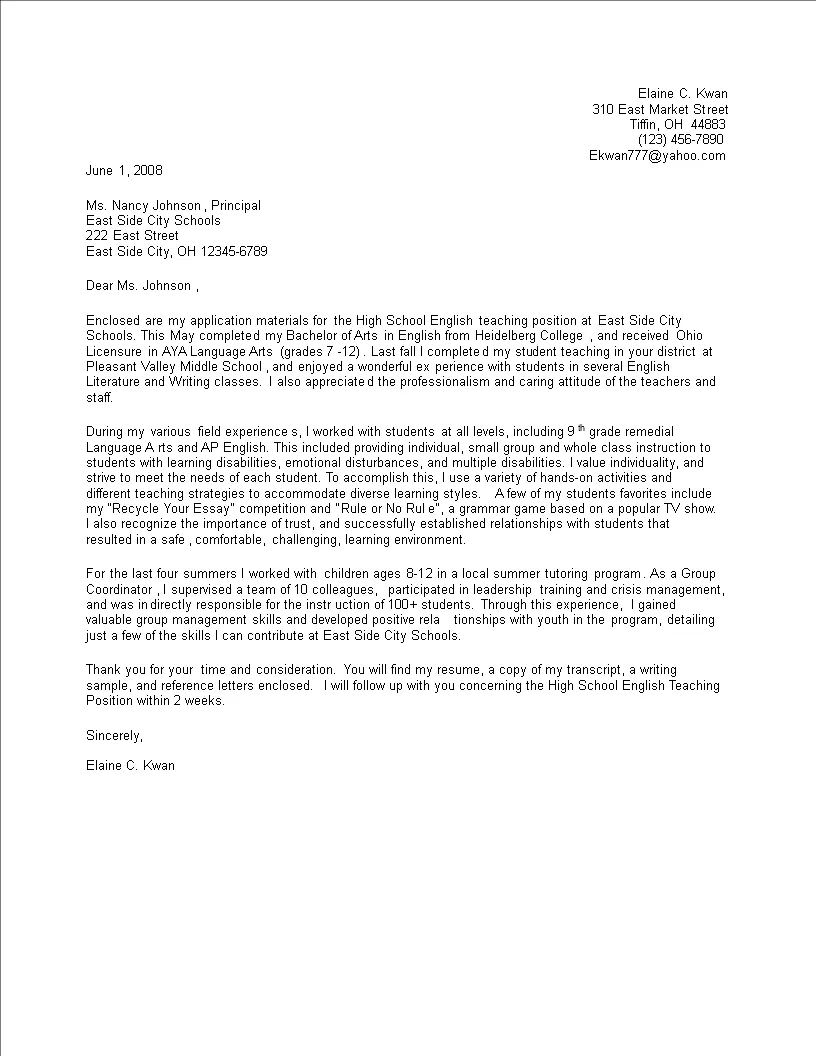Understanding the Teaching Cover Letter
A cover letter is your first introduction to a potential employer, and for teaching jobs, it’s more than just a formality—it’s a critical opportunity to showcase your personality, skills, and passion for education. Think of it as a carefully crafted narrative that complements your resume, providing context, depth, and a personal touch that a list of qualifications alone cannot. This guide will walk you through the essential components of a winning cover letter, ensuring that you not only meet the requirements but also stand out from the crowd of applicants. A well-written cover letter is a powerful tool that can significantly increase your chances of landing an interview and ultimately, your dream teaching job.
Why a Cover Letter is Crucial
In the competitive field of education, a cover letter serves multiple vital purposes. Firstly, it allows you to tailor your application to the specific school or district, demonstrating your genuine interest and understanding of their needs and values. Secondly, it provides a platform to explain any gaps in your resume or unusual career paths, offering context that clarifies your qualifications. Thirdly, it showcases your communication skills, which are essential for teaching. A well-written cover letter is a testament to your ability to articulate your thoughts clearly and persuasively. Finally, it enables you to convey your enthusiasm and passion for teaching, qualities that are highly valued by hiring committees looking for dedicated educators.
Key Components of a Cover Letter
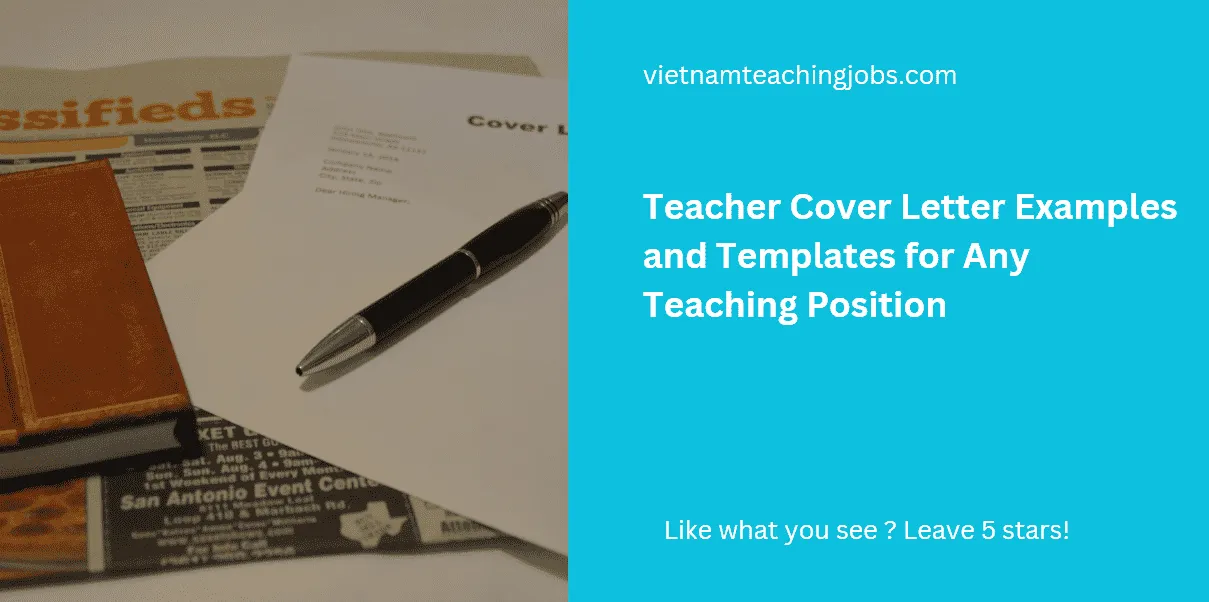
A successful teaching cover letter is structured strategically to capture the reader’s attention and effectively communicate your qualifications. It typically includes several key sections, each designed to highlight a different aspect of your suitability for the role. From the header and greeting to the body paragraphs and closing, every element contributes to your overall presentation. It is important to be succinct and clear, aiming to keep the letter within a single page while still providing enough detail to make a compelling case. Avoid generic templates and tailor each letter to the specific job and school you are applying for, showcasing your genuine interest and personalized approach.
Header and Contact Information
The header sets the tone for your entire cover letter. Include your full name, address, phone number, and professional email address at the top. Below this, add the date and the hiring manager’s name, title, and the school’s address if known. This section is crucial because it provides essential contact information and demonstrates your attention to detail. Make sure your contact information is accurate and professional-looking. Using a clear, easy-to-read font, and ensuring that the layout is clean and well-organized will make a positive first impression on the hiring committee, showing your professionalism and preparedness to be contacted.
Personalized Greeting
Avoid generic greetings such as ‘Dear Sir or Madam.’ Instead, strive to find the hiring manager’s name, which demonstrates that you have taken the time to research the school and the specific job. Use ‘Dear Mr./Ms./Mx. [Last Name]’ to create a personalized connection from the outset. This shows initiative and a genuine interest in the role. If the hiring manager’s name is not available, try to address the letter to the ‘Hiring Committee’ or ‘Human Resources Department.’ Researching the specific school and department can often help you find this key information, which shows that you have put in effort beyond a generic application.
Opening Paragraph Hook
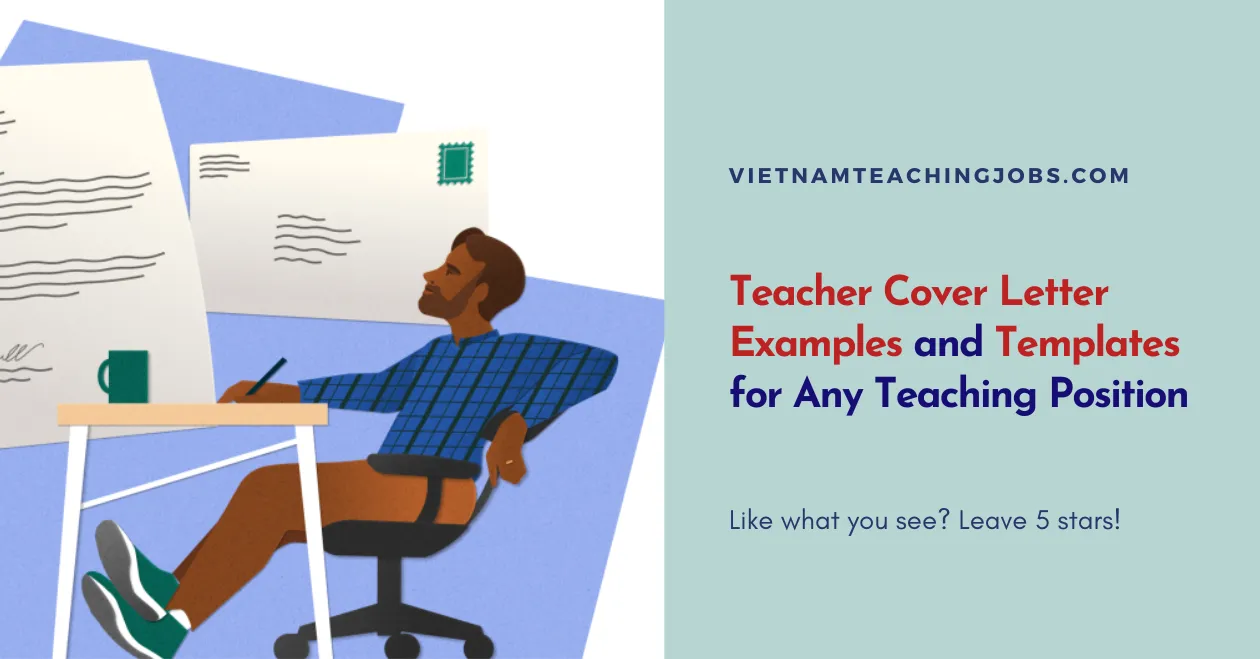
The opening paragraph is your chance to grab the reader’s attention. Start with a strong statement that immediately conveys your interest in the position and the school. Mention the specific job title and where you found the listing. You can also use this opportunity to briefly summarize your most relevant skills or experiences. Consider a compelling anecdote or a statement that highlights your passion for education. For instance, you could begin by describing a particular teaching moment that inspired you or a successful project that showcased your abilities. This sets the tone and makes the hiring manager want to learn more about your qualifications.
Highlighting Your Qualifications
The body of your cover letter is where you showcase your skills, experiences, and qualifications. This section should be detailed, yet concise. Highlight the key points from your resume and elaborate on them, providing specific examples that demonstrate your abilities. This part should align with the requirements of the job description and emphasize what makes you a good fit for the specific role and school. Use a clear and organized structure, dividing your points into well-defined paragraphs to make it easy for the hiring manager to follow your arguments.
Showcasing Relevant Skills
Identify the key skills that the school is looking for and highlight them in your cover letter. These might include classroom management, curriculum development, lesson planning, differentiated instruction, or communication with parents. Provide specific examples of how you have demonstrated these skills in past teaching experiences. For instance, you could describe how you successfully implemented a particular classroom management strategy or developed a new curriculum that improved student outcomes. Use action verbs to describe your accomplishments and quantify your achievements whenever possible. Emphasize any special training or certifications you have that are relevant to the position.
Quantifying Achievements
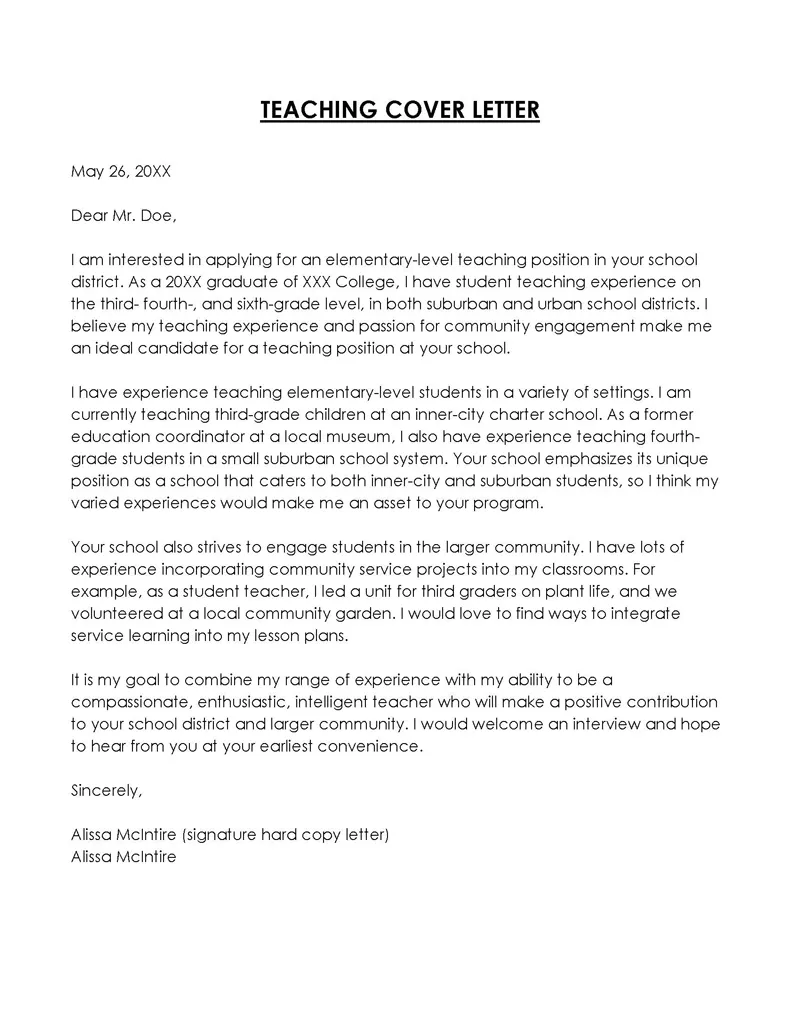
Whenever possible, quantify your achievements. Instead of saying ‘I improved student performance,’ say ‘I improved student test scores by 15% through the implementation of differentiated instruction.’ Numbers and specific data add credibility to your claims and demonstrate the impact you have made in previous roles. This approach is essential for making your application stand out. If you have received any awards or recognitions, mention them, as these will add further weight to your accomplishments. Also, be sure to highlight any contributions to school programs or community involvement to demonstrate well-roundedness and adaptability.
Demonstrating Passion for Education
A cover letter is an ideal place to express your passion for education and your commitment to student success. Show how you are enthusiastic about teaching and excited about contributing to the school’s mission and values. This section should be focused on the impact you want to make and your dedication to fostering a positive learning environment. Be authentic and genuine in your expression, letting your personality shine through. Remember, the hiring committee is looking for someone who is not only qualified but also passionate about teaching.
Expressing Enthusiasm for the School
Demonstrate that you have researched the school and understand its values, mission, and programs. Mention specific aspects of the school that resonate with you and explain why you are excited about the opportunity to teach there. This could include the school’s approach to education, its community involvement, or its commitment to innovation. By showing that you are familiar with the school, you convey your genuine interest in the position and increase your chances of getting an interview. This effort showcases your dedication and your understanding of the school’s unique culture and needs.
Sharing Your Teaching Philosophy
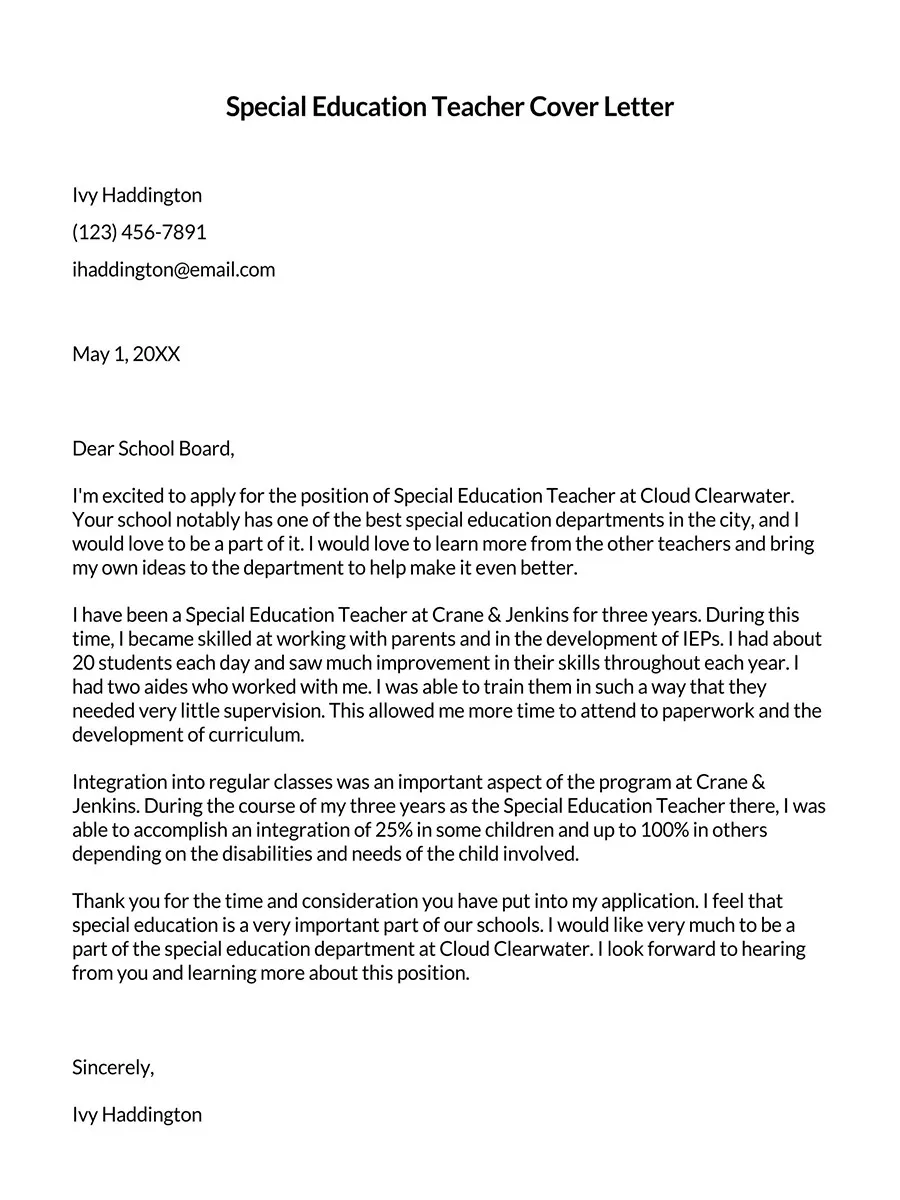
Briefly share your teaching philosophy. This is your opportunity to articulate your core beliefs about teaching and learning, and how you aim to create a positive impact on students. Highlight your approach to student engagement, classroom management, and creating a supportive learning environment. If you have a specific teaching methodology or approach, mention it here. Focus on student-centered learning and how you foster a collaborative and inclusive environment. For example, you can talk about how you encourage critical thinking, promote teamwork, or personalize your teaching to suit the students’ needs.
Closing the Letter
The closing paragraph is your final opportunity to make a positive impression. It should summarize your key qualifications, reiterate your enthusiasm, and make it clear what you want the hiring manager to do next. This section should be concise and professional, leaving a lasting impression on the reader. The conclusion is critical, as it often remains in the reader’s mind long after they have finished reading the letter. Make it count by being clear, confident, and actionable.
Call to Action
End your letter with a clear call to action. State your desire for an interview and express your availability to discuss your qualifications further. This demonstrates your initiative and eagerness. Provide your contact information and thank the hiring manager for their time and consideration. Make it easy for them to contact you by reiterating your email address or phone number. This step encourages the reader to take the next step and indicates that you are proactive and keen on moving forward in the hiring process.
Professional Closing and Signature
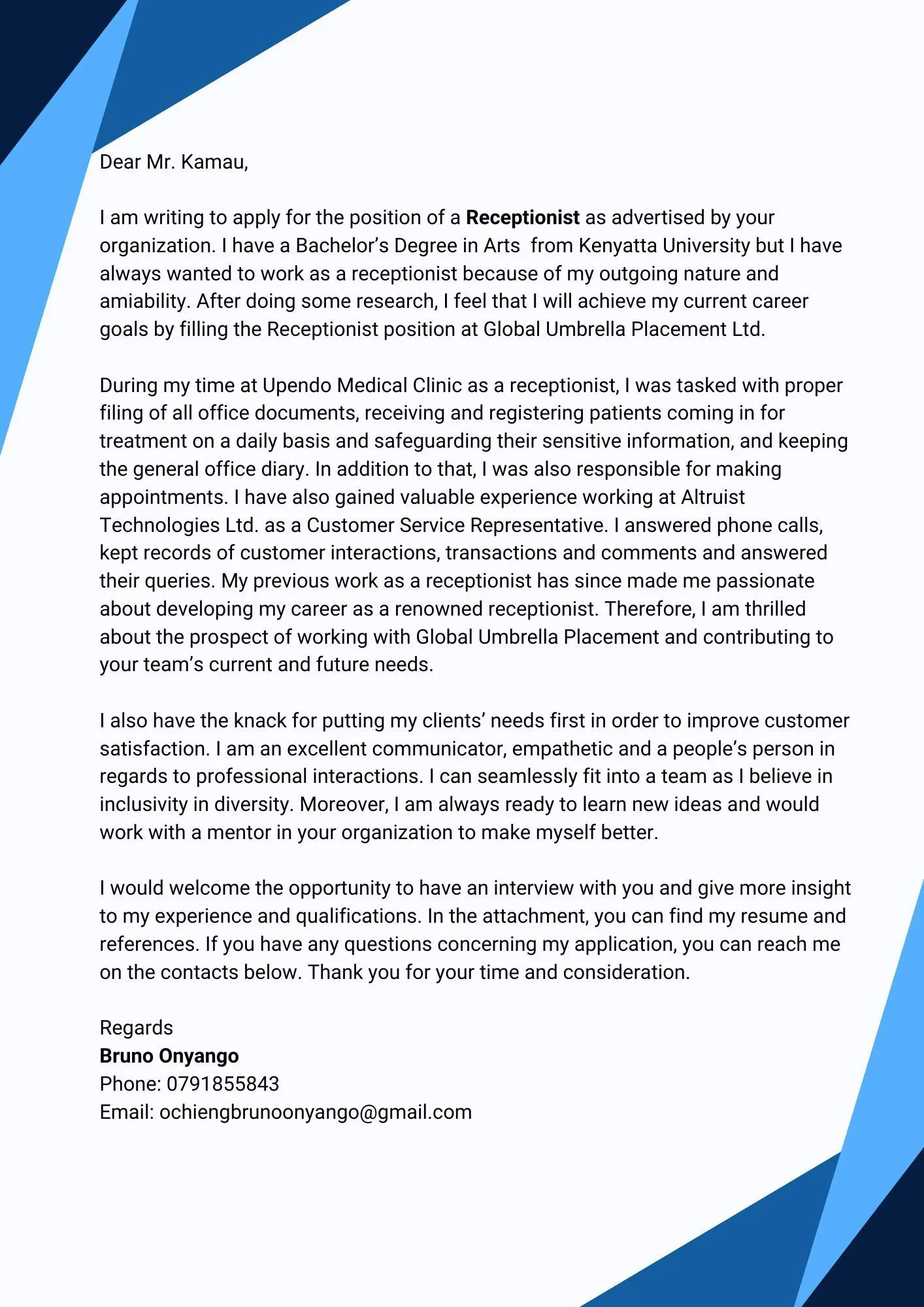
Use a professional closing such as ‘Sincerely,’ ‘Best regards,’ or ‘Respectfully.’ Follow this with a space and then type your full name. If you are submitting a printed cover letter, leave space for your handwritten signature above your typed name. Ensure your signature is legible and professional. Review your entire letter for any errors in grammar, spelling, or punctuation before submitting your application. Proofreading is essential, as mistakes can detract from your credibility. Make sure your formatting is consistent and that you have used a professional and readable font.
